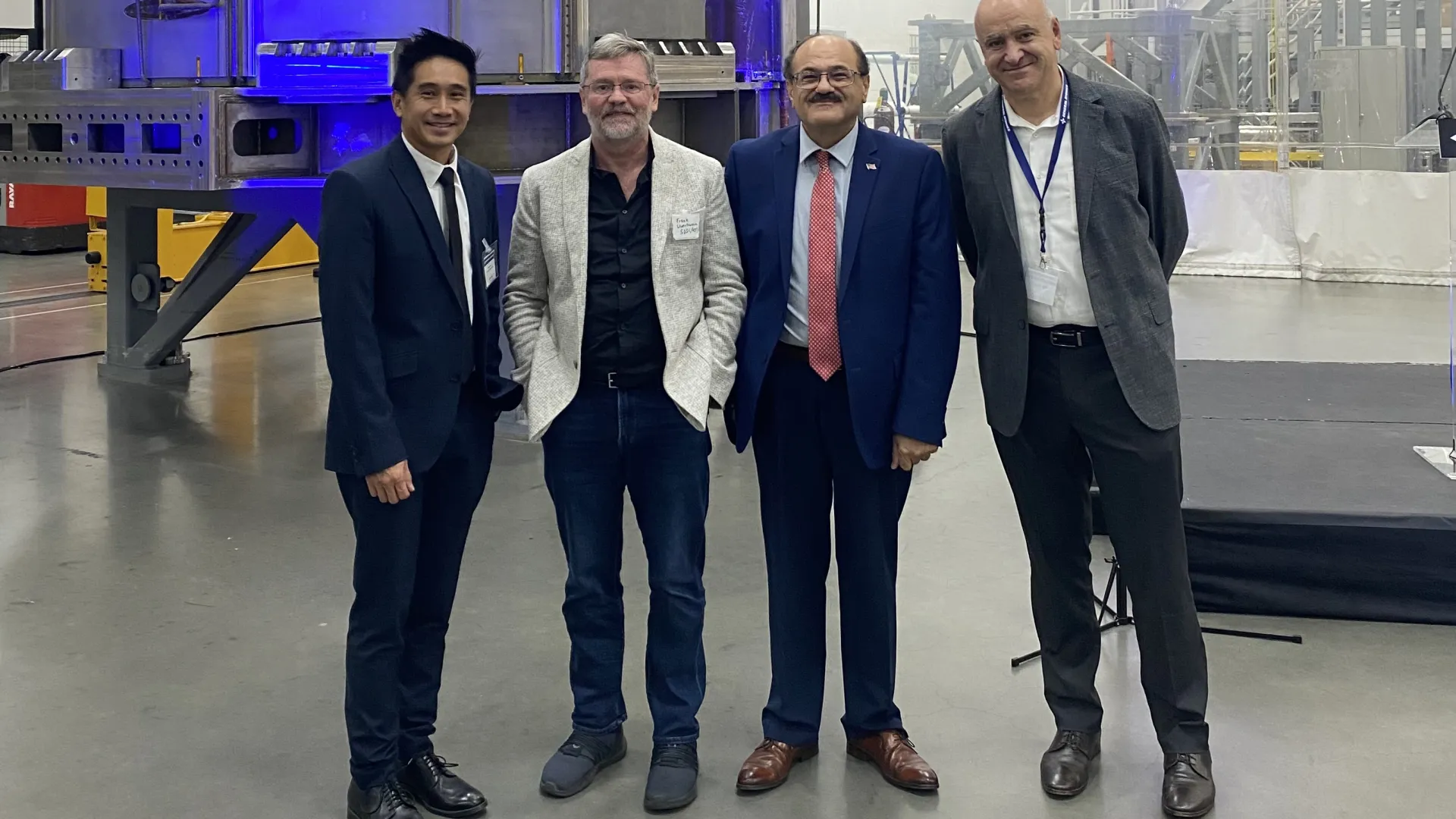Alan Llavore | Office of Marketing and Communications | (909) 537-5007 | allavore@csusb.edu

Cal State San Bernardino representatives recently joined U.S. Department of Energy and General Atomics officials to mark the completion of the world’s largest pulsed superconducting magnet for fusion energy — a milestone project that highlights California’s role in global fusion research and technology.
The event at General Atomics’ Magnet Technologies Center in San Diego on Aug. 28 celebrated the completion of the Central Soleniod Modules that will power fusion reactions at the International Thermonuclear Experimental Reactor, now under construction in southern France. At nearly 60 feet tall and consisting of six individual modules, the Central Solenoid is the world’s largest and most powerful pulsed superconducting magnet for fusion energy. General Atomics has served as a major contributor to U.S. fusion research for decades, operating the DIII-D National Fusion Facility in San Diego on behalf of the Department of Energy.
Representing Cal State San Bernardino were Khalil Dajani, chair and director of the School of Computer Science and Engineering, and Gerard Au, deputy chief information officer and chief information security officer for Information Technology Services. Both emphasized the significance of aligning higher education with industry and government partners to expand opportunities for students.
“Fusion energy represents more than the attainment of energy abundance; it has the potential to serve as a transformative driver of innovation across artificial intelligence, advanced manufacturing, and next-generation transportation systems,” Dajani said. “Moreover, it can foster workforce development and stimulate the creation of high-value employment opportunities across diverse sectors, thereby positioning CSUSB students and graduates to contribute meaningfully to emerging scientific and economic frontiers.”

Dajani added that CSUSB is “honored to team up on research related to fusion energy initiatives within the CSU system in close collaboration with the Department of Energy, national laboratories and other key partners. The magnet project exemplifies the transformative outcomes that can be achieved when private industry, the federal government, and academic institutions align their expertise and resources, a model that will be indispensable for the successful commercialization of fusion energy.”
In support of this mission, CSUSB recently launched the Artificial Intelligence, Quantum Computing, Fusion Energy, and Semiconductors (AQFS) Research and Training Laboratory. The facility provides a platform for students and faculty to pursue interdisciplinary research in four critical areas — artificial intelligence, quantum computing, fusion energy and semiconductors — while preparing STEM students for careers in national security and advanced technologies. The lab is funded in part by grants from the Union Pacific Community Ties Giving Program and a 2025 award from the Vital and Expanded Technologies Initiative.
The university’s Information Technology Services also advances research through its High Performance Computing Initiative, which gives the campus community access to supercomputing resources across the country. The program supports faculty- and student-led projects in fields ranging from computer science and physics to biology and the social sciences.
Founded in 1955, General Atomics is a U.S. defense and technology company engaged in projects ranging from unmanned aircraft and satellite surveillance to next-generation nuclear fission and fusion research. It also developed the UC San Diego Supercomputer Center.
Officials said the completion of the solenoid project underscores Southern California’s growing role in high-tech manufacturing, job creation, and sustainable energy innovation. The Department of Energy has signaled plans to expand investment in fusion-related industries, which could strengthen domestic supply chains and develop a new generation of workers.